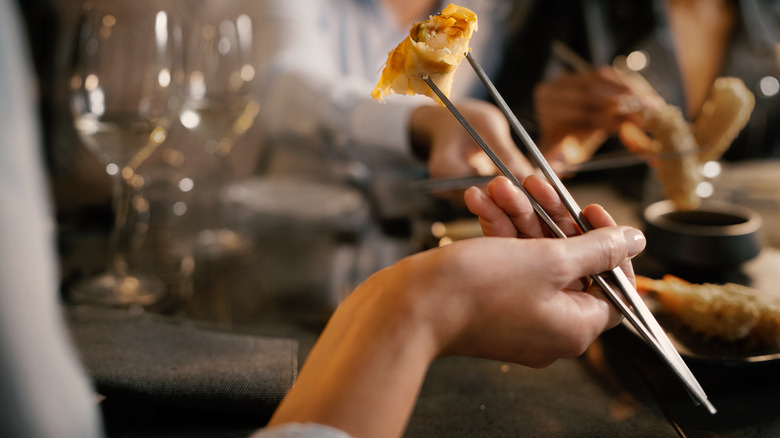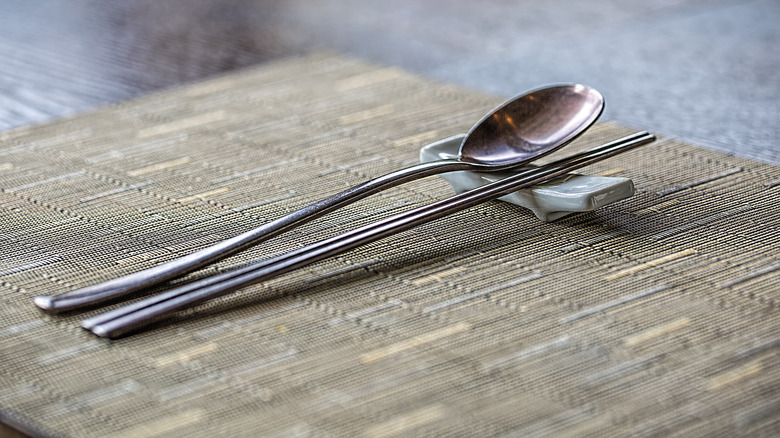Can You Ask For Wooden Chopsticks At A Korean Restaurant?
Dining etiquette is a minefield any way you twist it. In fancy restaurants, the discerning diner must know which fork goes on the left and when it's appropriate to pick it up. Can you share food? Which direction should you pass the plate? These often unspoken codes vary even more when it comes to regional differences — and you might have some trouble wielding a pair of Korean chopsticks.
Korean chopsticks (aka jeotgarak) are typically made from brass or stainless steel. Historians theorize that metal became the dominant material over bamboo or wood back in the Baekje period (18 B.C. to A.D. 660) so that Korean royals could detect if their food had been poisoned; it was thought that metal would change color in the presence of poison. Today's foodies have kept it around, as metal is stronger, easier to clean, doesn't absorb moisture, and can handle higher temperatures.
But the material isn't without some drawbacks. Compounded with the excess weight, metal chopsticks also have less traction than their wooden counterparts, so they're often carved into a flat, square shape with ridged ends to help users get a better grip. Still, you have to have a pretty seasoned degree of dexterity to efficiently use them. Even native Koreans sometimes have trouble getting the nimbleness down with these weighty tools.
Thankfully, embarrassing a guest for their lack of chopsticks know-how is also considered pretty ungraceful. If you need lighter wooden chopsticks (or even a fork), don't be shy about asking your host for a utensil swap.
Enjoy your meal with any tool that gets the job done — but know how to use it properly
While some of their dishes might seem similar, dining etiquette differs significantly in Korean restaurants compared to Chinese or Japanese restaurants. When dining in a Korean establishment, don't pick up the bowl to slurp the broth, and don't use chopsticks to eat rice — grab a spoon instead. In Korea, "suejo" refers to the chopstick and long-handled spoon utensil set on most traditional tables. It's a portmanteau of "sutgarak" for spoon and "jeotgarak."
For proper table manners, hold the spoon and chopsticks in different hands, and only use one of these utensils at a time. For a better grip no matter whether you're using metal or wooden chopsticks, grasp them higher up toward the ends. This allows for a greater range of motion.
Also, never stick your chopsticks straight into your bowl of rice or noodles. It's considered a social faux pas at the dining table, as it resembles a customary Korean funeral ritual in which a pair of chopsticks are stuck upright in a bowl of rice and as an offering to the deceased; Japan has a similar ritual called tatebashi. Instead, lay your chopsticks down on the table or flat across the rim of the bowl when not actively using them. Many Korean table settings are outfitted with designated chopstick rests for this purpose. (The spoon is simply set on top of a napkin.)

